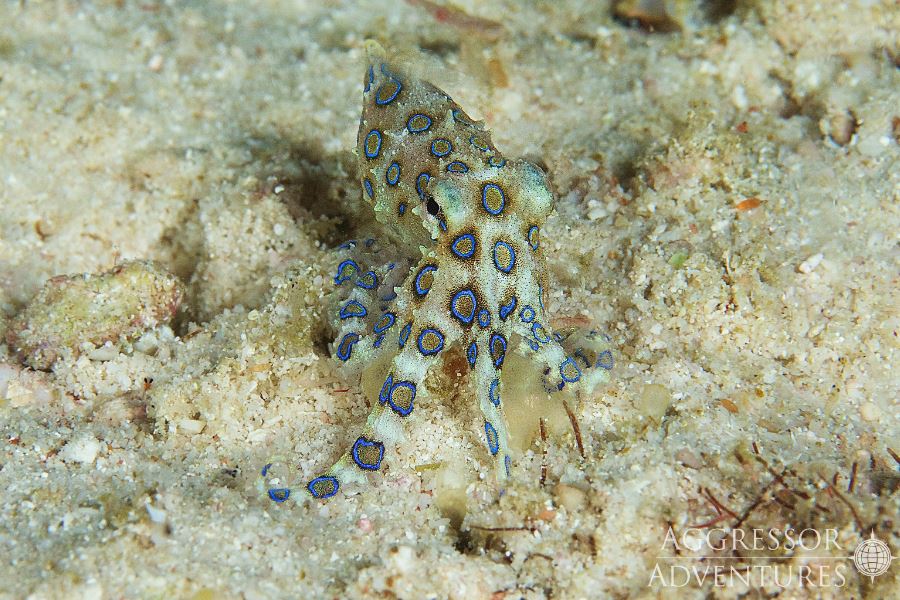By Raquel Gilliland; Sea of Change Intern
Octopuses are part of the phylum Mollusca and are grouped in the class Cephalopoda with squids and cuttlefish. They make up the order Octopoda with over 300 species, all living in various habitats from abyssal depths to pelagic waters, to coral reefs, and intertidal zones. They can range in size from the Giant Pacific Octopus (Enteroctopus dofleini) which can weigh up to 33lbs and have an arm span of up to 14ft, to the smallest species, the Star-Sucker Pygmy Octopus (Octopus wolfi), which can weigh less than 1gram and is around 1in in length.
The octopus is bilaterally symmetrical with eight arms, two eyes, three hearts, gills for breathing, one mouth, many suction cups on each arm, and one large brain. In fact, octopuses have the highest brain-to-body mass ratio of all invertebrates and a larger brain than many vertebrates. Their complex nervous system extends to their arms, wherein each contains a nerve cord and can act independently. The suction cups on each arm are equipped with chemoreceptors that allow the octopus to taste whatever it’s touching.

These intelligent animals have been observed to have problem-solving capabilities by successfully navigating mazes using both long-term and short-term memory. They have been trained in laboratory settings to distinguish between different shapes and patterns. Within the aquarium industry, they are known for breaking out of their cages in search of food. Some species have also been observed using coconut shells to build themselves a shelter thus exhibiting tool use. Although intelligent, they learn nothing from their parents, as the male octopus dies shortly after mating and the female dies shortly after her eggs are hatched. They are mainly found alone, except when matting. They are also masters of disguise and use camouflage to avoid predators and when hunting. Their skin is equipped with chromatophores which are specialized cells that allow the octopus to change color and texture to match its surroundings. They can also use their ink sacks to expel a cloud of ink that distracts the predator while the octopus escapes. Known predators on octopuses include sharks, fishes, seabirds, dolphins, sea otters, other cephalopods, and humans.
Octopus is a delicacy in many countries, with the worldwide catch peaking in 2007 at 380,000 tons. Most species are listed as least concern or data deficient on the IUNC Red List, meaning we do not have enough data on their population dynamics. There is much research that needs to be done on these intelligent creatures and many things that we can learn from them. Today, scientist are studying them for their ability to regenerate limbs, the color changing abilities of their skin, their behavioral intelligence, and their distributed nervous system. As our oceans warm and habitats are changing drastically, we may run out of time before we can learn all that we can from octopuses before it’s too late.




